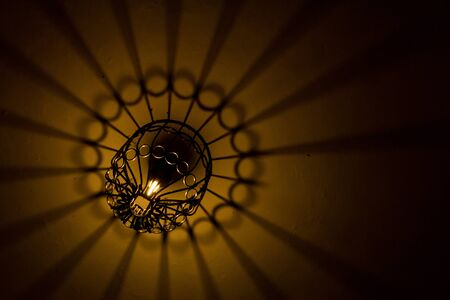1. Introduction to Mid-Century Modern Design
Mid-century modern design is a timeless style that emerged in the mid-20th century and continues to influence interior spaces today. Characterized by clean lines, organic forms, and functional beauty, this design movement became popular in the post-World War II era as people sought simplicity and innovation in their homes. Its impact can be seen across furniture, architecture, and lighting—especially statement lighting.
Origins of Mid-Century Modern Design
The mid-century modern movement developed between the 1940s and 1960s, influenced by Bauhaus principles and Scandinavian minimalism. Architects and designers like Charles and Ray Eames, Eero Saarinen, and George Nelson introduced groundbreaking ideas that embraced both form and function. The emphasis was on creating stylish yet practical interiors that catered to the needs of modern living.
Key Characteristics of Mid-Century Modern Design
This design style is defined by several distinguishing features that set it apart from other movements:
| Feature | Description |
|---|---|
| Simplicity | Uncluttered spaces with a focus on functionality and practicality. |
| Organic Forms | Smooth curves, natural shapes, and a blend of man-made and natural materials. |
| Bold Colors | A mix of neutral tones with pops of vibrant hues like mustard yellow, teal, and orange. |
| Innovative Materials | The use of molded plywood, fiberglass, metal, and glass for furniture and decor. |
| Open Floor Plans | A seamless connection between indoor and outdoor spaces for a more spacious feel. |
Cultural Significance in Interior Spaces
The appeal of mid-century modern design lies in its ability to create warm, inviting spaces while maintaining a sleek and contemporary look. It became especially prominent in American homes during the suburban boom of the 1950s and has remained relevant due to its adaptability. Designers continue to draw inspiration from this era when creating modern interiors, including statement lighting pieces that reflect the movement’s aesthetic values.
The Role of Lighting in Mid-Century Modern Design
Lighting played a crucial role in shaping mid-century modern interiors. Fixtures were designed not only for illumination but also as artistic elements that enhanced a rooms overall ambiance. This era introduced iconic lighting designs such as Sputnik chandeliers, globe pendants, and sculptural floor lamps—all of which continue to inspire contemporary statement lighting trends today.
2. Defining Features of Mid-Century Modern Lighting
Mid-century modern lighting is known for its distinctive blend of form, function, and innovative materials. This design movement, which emerged in the mid-20th century, introduced lighting fixtures that were both practical and artistic. By exploring the unique characteristics of mid-century modern lighting, we can better understand how it continues to influence statement lighting today.
Materials: A Mix of Natural and Industrial Elements
One of the most defining aspects of mid-century modern lighting is its use of diverse materials. Designers of this era embraced both organic and industrial elements, creating a striking contrast that remains popular in contemporary interiors.
| Material | Description |
|---|---|
| Brass & Metal | Often used for sleek finishes and structural components, adding a polished yet industrial feel. |
| Wood | Brought warmth to designs, frequently incorporated into lamp bases or accents. |
| Glass & Acrylic | Used for diffusers and shades to create soft lighting effects while maintaining a minimalist aesthetic. |
| Ceramic | A popular choice for lamp bases, adding texture and handcrafted appeal. |
Forms: Sleek Lines and Geometric Shapes
The mid-century modern aesthetic prioritizes clean lines, geometric shapes, and asymmetrical compositions. Lighting fixtures from this era often feature bold silhouettes that add visual interest without overwhelming a space.
- Sputnik Chandeliers: Inspired by space exploration, these fixtures have multiple arms extending outward, each ending with a bulb.
- Tapered Lamp Bases: Many table and floor lamps have narrow bases that widen toward the bottom, creating a balanced yet sculptural look.
- Dome and Cone Shades: Pendant lights often feature dome-shaped or conical shades that direct light downward efficiently.
- Sculptural Floor Lamps: Arched or tripod-style floor lamps provide both functionality and an artistic element.
Functionality: Practical Yet Stylish Illumination
A key principle of mid-century modern design is that form follows function. Lighting during this period was designed to be both aesthetically pleasing and highly functional. Adjustable arms, directional shades, and multi-light fixtures allowed users to customize illumination based on their needs.
The Role of Statement Lighting in Mid-Century Modern Design
This era emphasized lighting as more than just a utility—it was an integral part of the overall interior design. Whether through dramatic chandeliers or understated table lamps, mid-century modern lighting contributed to the ambiance while making a stylish impact.
![]()
3. How Mid-Century Modern Influences Statement Lighting
Mid-century modern design has had a lasting impact on contemporary statement lighting, shaping it with bold geometric forms, minimalist structures, and innovative materials. This influence can be seen in many of today’s lighting designs, where simplicity meets functionality to create visually striking pieces that serve as both art and illumination.
Bold Geometric Forms
One of the defining characteristics of mid-century modern design is its use of clean lines and geometric shapes. Contemporary statement lighting continues this tradition by incorporating spherical, linear, and angular elements to create eye-catching fixtures that stand out in any space.
| Geometric Shape | Examples in Statement Lighting |
|---|---|
| Spherical | Globe chandeliers, orb pendant lights |
| Linear | Sleek LED tube fixtures, elongated metal frames |
| Angular | Pyramid-inspired pendants, asymmetrical sconces |
Minimalist Structures
The mid-century modern movement embraced minimalism by focusing on function without unnecessary ornamentation. This principle is evident in modern statement lighting, where designers use streamlined silhouettes and refined materials to achieve an elegant yet understated look.
Simplified Designs for Maximum Impact
A key aspect of mid-century modern-inspired lighting is the emphasis on simplicity. Instead of overly intricate details, these fixtures rely on proportion, balance, and high-quality craftsmanship to make a statement. For example, a single sculptural pendant light can serve as a focal point while maintaining a clean aesthetic.
The Use of Innovative Materials
The mid-century era introduced new materials such as molded plastics, brass, and frosted glass into lighting design. Today’s statement lighting continues to experiment with these materials while integrating modern advancements like energy-efficient LEDs and smart technology.
A Blend of Vintage and Contemporary Elements
The fusion of mid-century aesthetics with contemporary innovations allows for unique designs that honor the past while embracing the future. Brass finishes, opal glass shades, and wooden accents are frequently paired with modern functionalities like dimmable features and remote-controlled settings.
4. Iconic Mid-Century Lighting Designers and Their Impact
Mid-century modern design brought about a revolution in lighting, with visionary designers creating pieces that continue to influence contemporary statement lighting. Among the most influential figures in this era were George Nelson and Arne Jacobsen, whose work set new standards for both aesthetics and functionality.
George Nelson: The Pioneer of Modern Lighting
George Nelson was a key figure in mid-century design, known for his ability to blend innovation with practicality. His lighting designs remain some of the most recognizable and sought-after pieces today.
Signature Designs by George Nelson
| Lighting Design | Key Features | Influence on Modern Lighting |
|---|---|---|
| Bubble Lamps | Soft, spherical shapes with a unique polymer coating | Paved the way for lightweight, diffused lighting solutions |
| Cigar and Saucer Pendants | Sleek, organic silhouettes inspired by everyday objects | Became staples in modern interiors, offering timeless elegance |
Arne Jacobsen: Merging Functionality with Elegance
Danish architect and designer Arne Jacobsen is celebrated for his ability to combine form and function seamlessly. His approach to lighting emphasized clean lines, minimalist appeal, and user-friendly designs.
Arne Jacobsen’s Most Influential Lighting Designs
| Lighting Design | Key Features | Impact on Statement Lighting |
|---|---|---|
| AJ Lamp Series | An adjustable head with a sleek, angular structure | Became an icon of task lighting, blending style with usability |
| Bellevue Lamp | A curved silhouette inspired by Bauhaus principles | Pioneered the use of streamlined shapes in modern lighting fixtures |
The Lasting Influence of Mid-Century Lighting Designers
The work of designers like Nelson and Jacobsen continues to shape contemporary lighting trends. Their emphasis on simplicity, organic forms, and functionality has inspired modern designers to create statement lighting that not only illuminates spaces but also serves as an artistic focal point.
Their Influence on Today’s Interiors:
- Timeless Appeal: Their designs remain relevant decades later, fitting seamlessly into various interior styles.
- Sustainable Inspiration: Many modern lighting manufacturers draw from their minimalist approaches to create eco-friendly designs.
- Aesthetic Versatility: Whether in residential or commercial spaces, their lighting solutions continue to define modern sophistication.
The impact of mid-century modern designers on statement lighting is undeniable. Their innovative use of materials and forward-thinking designs have left an indelible mark, ensuring that their legacy continues to shine brightly in contemporary interiors.
5. Integrating Mid-Century Statement Lighting in Modern Interiors
Mid-century modern statement lighting can bring a timeless charm to contemporary interiors, blending vintage aesthetics with modern functionality. Whether in a home or a commercial space, integrating these iconic lighting pieces requires thoughtful placement and design coordination. Below are practical approaches to seamlessly incorporating mid-century inspired statement lighting into modern interiors.
Choosing the Right Fixture
Selecting the right mid-century statement lighting depends on the space’s function and design. Here are some key considerations:
- Pendant Lights: Ideal for dining areas and kitchen islands, offering both task lighting and style.
- Chandeliers: Perfect for entryways or living rooms, creating an eye-catching focal point.
- Wall Sconces: Great for hallways or bedside lighting, adding warmth and ambiance.
- Floor and Table Lamps: Provide flexibility in living spaces, enhancing coziness and character.
Blending with Contemporary Aesthetics
To ensure mid-century statement lighting complements modern interiors rather than overpowering them, consider these strategies:
- Mix Materials Thoughtfully: Combine brass, wood, and glass elements to create a balanced look.
- Pair with Neutral Tones: Mid-century designs often feature warm metals and clean lines that work well with neutral color palettes.
- Maintain Proportion: Choose fixtures that suit the scale of the room to avoid overwhelming the space.
- Use Layered Lighting: Combine statement lighting with recessed or accent lights for depth and versatility.
Application in Different Spaces
The table below highlights different ways to incorporate mid-century statement lighting in various settings:
| Space | Recommended Lighting | Design Tips |
|---|---|---|
| Living Room | Sculptural chandeliers or arc floor lamps | Create a focal point while maintaining an open feel. |
| Dining Area | Sputnik chandeliers or globe pendants | Select warm-toned bulbs for an inviting atmosphere. |
| Bedroom | Wall sconces or tripod table lamps | Avoid overly bright lights to maintain a cozy ambiance. |
| Office/Workspace | Sleek desk lamps or adjustable floor lamps | Ensure adequate task lighting without glare. |
| Commercial Spaces (e.g., cafes, boutiques) | Bespoke pendant lights or retro-inspired fixtures | Create a nostalgic yet sophisticated brand identity. |
Final Tips for Seamless Integration
- Match with Furniture Styles: Pair mid-century lighting with furniture featuring clean lines and organic shapes.
- Avoid Overcrowding: Use one or two statement pieces per room to maintain balance.
- Dimmers for Versatility: Install dimmer switches to adjust brightness based on mood and need.
- Mimic Mid-Century Color Schemes: Incorporate earthy tones, mustard yellows, or muted greens to enhance cohesion.
By carefully selecting and positioning mid-century modern statement lighting, you can create visually stunning yet functional spaces that bridge past and present design trends effortlessly.


